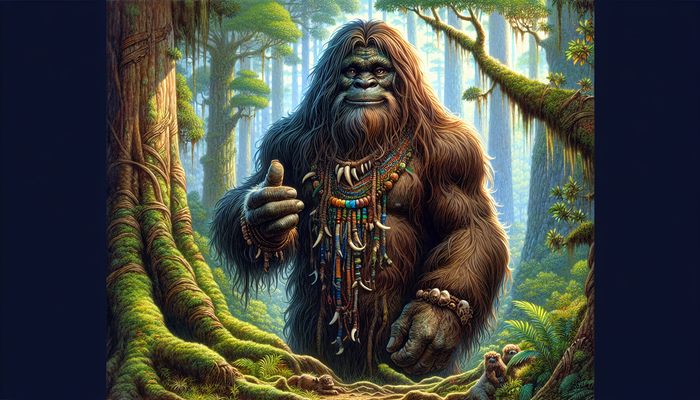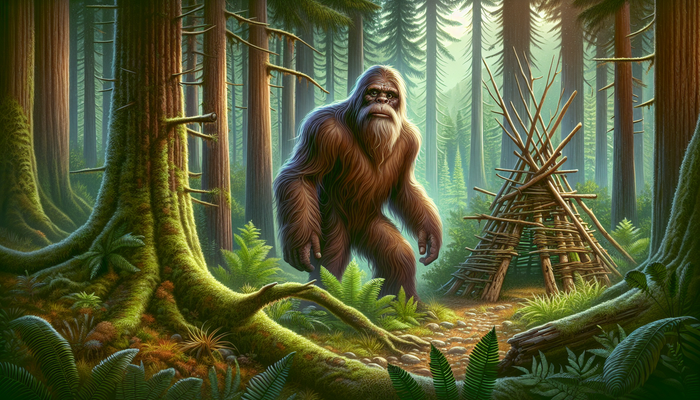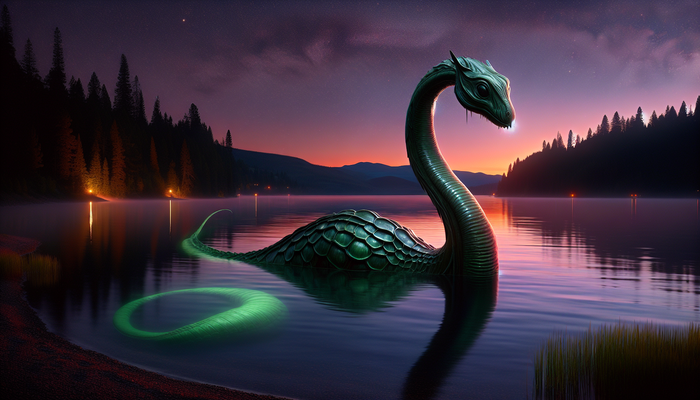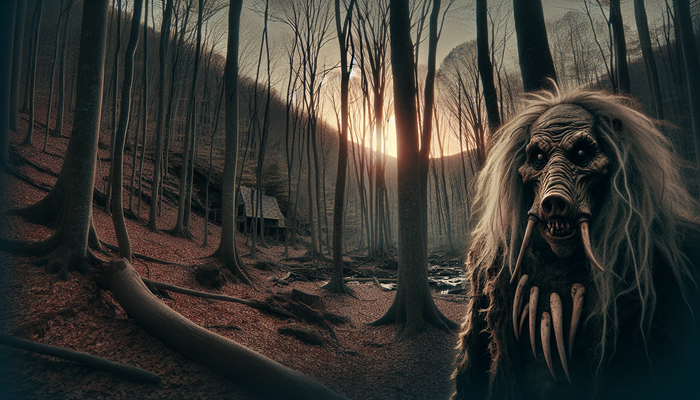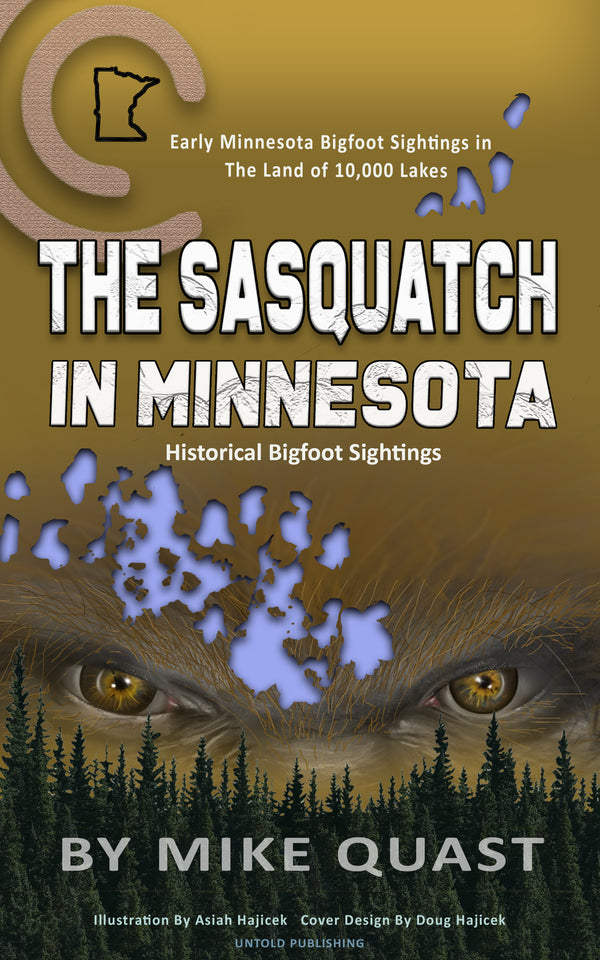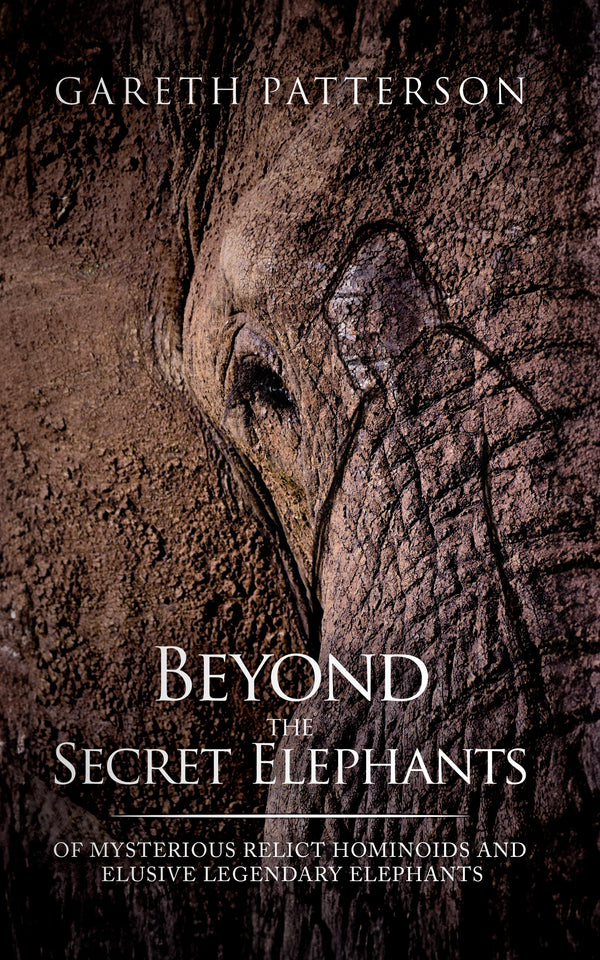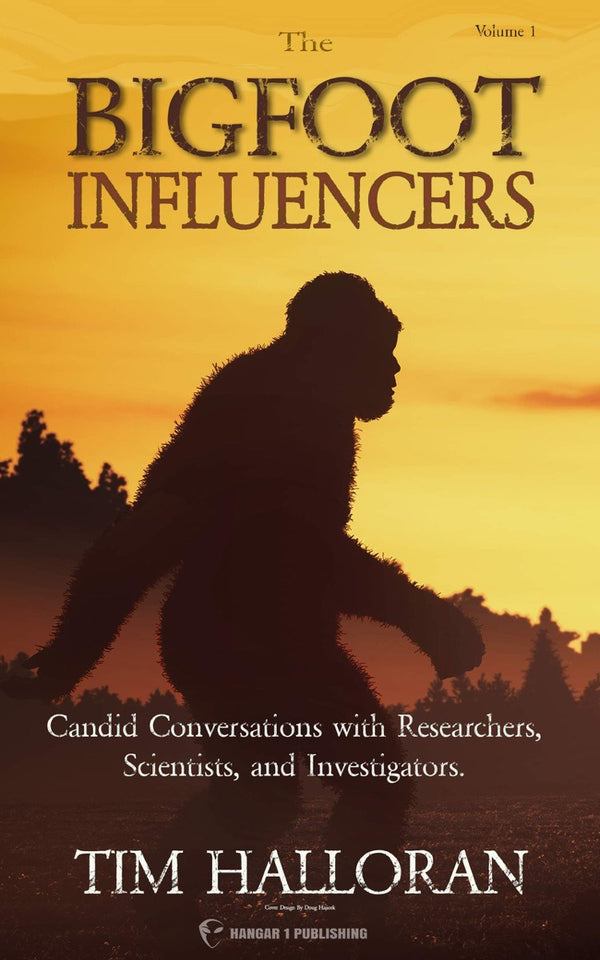The Legendary Solomon Island Giants
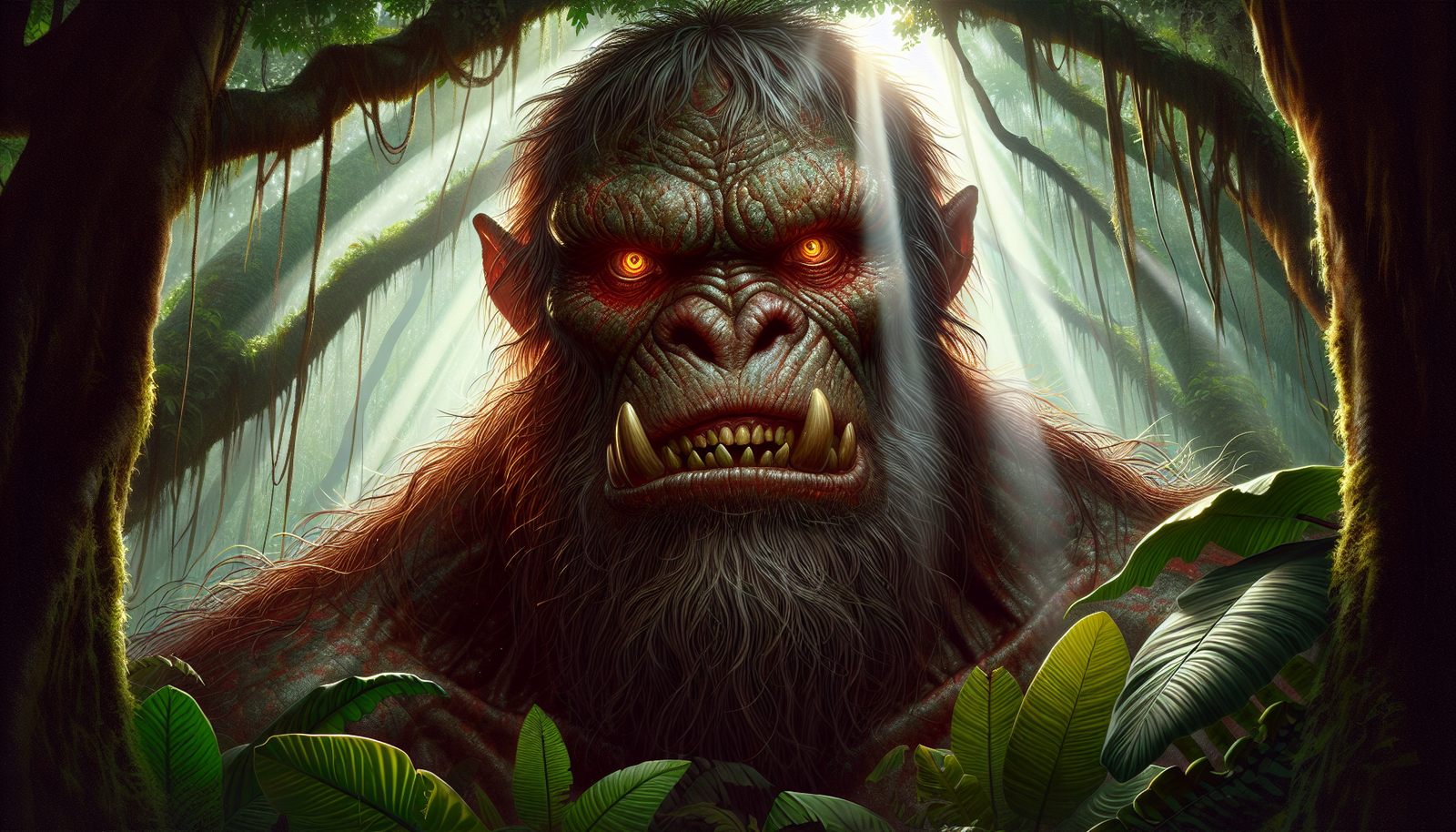
By Lucas Jennings, Cryptozoologist and Adventurous Naturalist
In the vast expanse of the South Pacific, a tapestry of islands lies scattered like emerald gems upon an azure sea. Among these jewels, the Solomon Islands stand out, not just for their breathtaking beauty, but for the enigmatic tales that have emerged from their misty jungles and shadowy caves. As an adventurous naturalist, I've always been drawn to the mysteries that lurk in the fringes of our understanding, and few legends have captured my imagination quite like that of the Solomon Island Giants.
The Allure of the Unknown
Picture this: a remote archipelago, its islands draped in dense rainforests, their interiors largely unexplored. It's a land where ancient traditions meld with the echoes of a tumultuous past, where the lines between myth and reality blur. This is the Solomon Islands, a place that has long beckoned to me with its siren song of the unknown.
The legend of the Solomon Island Giants, also known as the Guadalcanal Giants, has been whispered about for generations. These beings, said to tower over humans at heights of 10 to 15 feet, have captured the collective imagination of the islanders and intrepid researchers alike. But what lies at the heart of this enduring mystery? Are these giants merely the stuff of folklore, or could there be a grain of truth hidden within the tales? It's a question that has driven me to delve deep into the lore and venture into the uncharted territories of the Solomons.
A Land of Secrets
To understand the legend of the giants, one must first appreciate the context in which these stories have emerged. The Solomon Islands, an archipelago of nearly a thousand islands, lie east of Papua New Guinea, scattered across the shimmering expanse of the South Pacific. It's a nation steeped in Melanesian heritage, where over 120 indigenous languages are spoken, each one a thread in the rich tapestry of the islands' culture.
The history of the Solomon Islands is one of ancient settlements and colonial encounters. Long before European explorers set foot on these shores, Papuan and Austronesian peoples had made the islands their home, navigating the seas in their outrigger canoes and leaving their mark on the landscape. It wasn't until 1568 that Spanish navigator Alvaro de Mendaña stumbled upon these islands, naming them after the biblical King Solomon, famed for his wisdom and wealth.
But the Solomon Islands' story is also one of conflict and upheaval. During World War II, the islands became a fierce battleground, with the Battle of Guadalcanal etching itself into the annals of history. The scars of war, both physical and psychological, have left an indelible mark on the islands and their people.
Yet, despite the passage of time and the encroachment of the modern world, much of the Solomon Islands remains shrouded in mystery. The rugged, mountainous interiors of the larger islands are cloaked in dense, virgin rainforests, their secrets jealously guarded by the impenetrable green. It's a place where unknown species may still roam, where hidden wonders await those intrepid enough to seek them out. And it's here, in the untamed wilderness, that the legend of the giants has taken root.
Tales of the Titans
The stories of the Solomon Island Giants have been passed down through the generations, woven into the very fabric of the islanders' oral traditions. For the people of the Solomons, these giants are more than just characters in a tale; they are an integral part of their cultural identity, their existence as real as the ground beneath their feet.
According to the legends, the giants are a sight to behold. Standing at heights that dwarf the average human, they are said to possess powerful, muscular physiques, their bodies covered in a coat of reddish hair. Their faces are marked by distinctive features:
- Prominent brow ridges
- Piercing red eyes
- Wide, gaping mouths
They are beings that inspire both awe and terror, their presence looming large in the collective imagination of the islanders.
But the giants are not just physical specimens; they are also beings with their own desires and motivations. The stories tell of their interactions with the islanders, and they are not always benevolent. One of the most chilling tales is that of Mango, a woman who was allegedly kidnapped by the giants and forced to live among them as a wife. For 25 years, Mango was believed to be lost, her fate unknown. But one day, she was found, pregnant and in a state of utter distress, her mind shattered by her ordeal. The child she bore was said to be a half-giant, a testament to the shocking reality of her experience.
Other stories paint a picture of the giants as fierce, cannibalistic creatures, prone to attacking villages and carrying off the unfortunate souls who cross their path. They are said to inhabit the deep caves and dense jungles of the islands, emerging under the cover of darkness to wreak havoc and inspire fear.
But are these tales merely the product of overactive imaginations, the result of centuries of embellishment and exaggeration? Or could there be a kernel of truth hidden within the legends, a reality that has yet to be fully uncovered?
In Pursuit of the Truth
Enter Marius Boirayon, a man whose name has become synonymous with the investigation of the Solomon Island Giants. Boirayon, an Australian researcher and the Research Director of the Solomon Anthropological Expedition Trust Board Incorporated, has dedicated years of his life to unraveling the mystery of these elusive beings.
Boirayon's journey began when he first set foot on the Solomon Islands, working as a helicopter pilot and engineer. But it was his marriage to a local woman that truly opened the doors to the islands' secrets. As he immersed himself in the culture and traditions of the Solomons, Boirayon became increasingly fascinated by the tales of the giants. He knew he had to delve deeper.
In his groundbreaking book, "Solomon Island Mysteries," published in 2010, Boirayon meticulously chronicles the accounts he gathered from the islanders themselves. Through countless interviews and expeditions into the dense jungles, he pieced together a compelling tapestry of evidence, one that suggests the giants may be more than mere legend.
Boirayon's research uncovered a wealth of firsthand accounts, each one adding another layer to the mystery. Islanders spoke of encounters with the giants, of sightings that had been burned into their memories. Some even claimed to have stumbled upon footprints left by these behemoths, measuring up to an astonishing four feet in length.
But Boirayon's investigations were not limited to the realm of folklore. He also delved into the historical records, unearthing a fascinating link between the giants and the tumultuous events of World War II. During the conflict, Japanese soldiers stationed on the islands reported encounters with massive, hairy humanoids, beings that displayed a shocking level of aggression and even engaged in acts of cannibalism. These wartime accounts, recorded in the heat of battle, add a chilling layer of credibility to the legend of the giants.
Of course, investigating a mystery as profound as the Solomon Island Giants is no easy feat. The islands' rugged, unforgiving terrain poses a formidable challenge to even the most intrepid researchers. Dense rainforests, treacherous mountain ranges, and a lack of infrastructure have long hindered efforts to mount full-scale expeditions into the heart of giant country.
But the challenges go beyond the physical. There are also ethical considerations to be taken into account. The Solomon Islands are home to a rich tapestry of indigenous cultures, each with their own sacred traditions and beliefs. Any investigation into the giants must be conducted with the utmost respect for these communities, a delicate balance between scientific curiosity and cultural sensitivity.
Despite the hurdles, the allure of the Solomon Island Giants continues to draw researchers and adventurers from across the globe. The prospect of uncovering a species of hominid that has managed to elude the gaze of modern science is a tantalizing one, a discovery that could rewrite the very history of human evolution.
Theories and Speculations
As with any enduring mystery, the legend of the Solomon Island Giants has given rise to a host of theories and speculations. Some researchers have suggested that these beings could represent a relict population of Homo erectus, an archaic human species that once roamed the Earth. The idea is not without precedent - tales of hairy, bipedal creatures have emerged from the remote corners of the world, from the Himalayas to the dense forests of North America.
Could the Solomon Island Giants be a distant cousin of the fabled Bigfoot or Yeti, a relic from a time when multiple species of hominid walked the Earth? It's a tantalizing possibility, one that has driven cryptozoologists and adventurers to scour the globe in search of evidence.
Others have drawn parallels between the Solomon Island Giants and the Nephilim, a race of biblical giants mentioned in the Book of Genesis. The idea that these beings could have a connection to the mythological past adds a layer of intrigue to the legend, blurring the lines between the realms of science and spirituality.
But not everyone is convinced by the tales of the giants. Skeptics argue that the stories are simply the product of folklore and exaggeration, the result of centuries of embellishment and misinterpretation. They point to the lack of concrete physical evidence, the absence of bones or other remains that could provide definitive proof of the giants' existence.
Some suggest that the sightings could be attributed to misidentifications of known animal species, or even encounters with particularly large and fierce tribal warriors. After all, the Solomon Islands have a long history of headhunting and cannibalism, practices that have only added to the aura of mystery and danger that surrounds these lands.
In recent years, the discovery of a tree-dwelling giant rat in the Solomon Islands has added a new layer of intrigue to the debate. While not directly related to the legend of the giants, the existence of such a large and previously unknown species highlights the incredible biodiversity of these islands and the potential for new discoveries that could challenge our understanding of the natural world.
The Cultural Significance
Regardless of one's stance on the reality of the Solomon Island Giants, there is no denying the profound impact these beings have had on the culture and way of life of the islanders. For centuries, the giants have been woven into the very fabric of the islands' spiritual beliefs and practices, their presence a constant reminder of the power and mystery of the natural world.
The belief in the giants has shaped the way the islanders interact with their environment, influencing everything from their hunting practices to the location of their villages. The fear of encountering these beings has long kept the islanders from venturing too deep into the jungles, a natural barrier that has helped to preserve the islands' unique biodiversity.
But the giants are more than just a source of fear; they are also a symbol of the islanders' resilience and connection to their ancestral past. In a world that is rapidly changing, the legends of the giants serve as a reminder of the enduring power of tradition, a testament to the unbreakable bond between the people of the Solomons and the land they call home.
The Scientific Potential
For researchers like myself, the legend of the Solomon Island Giants represents more than just a fascinating cultural phenomenon; it is also a tantalizing scientific puzzle, one that could hold the key to unlocking some of the greatest mysteries of human evolution.
If the giants do exist, their discovery would be nothing short of groundbreaking. The implications for the fields of anthropology, biology, and genetics would be immense. A living population of archaic hominids would provide an unprecedented window into our own evolutionary past, a chance to study the very processes that shaped us as a species.
But the scientific significance of the giants goes beyond mere academic curiosity. In a world where habitat loss and climate change are pushing countless species to the brink of extinction, the discovery of a new hominid species would be a clarion call for conservation, a reminder of the incredible diversity and resilience of life on this planet.
Of course, any scientific investigation into the Solomon Island Giants must be conducted with the utmost care and sensitivity. The rights and beliefs of the indigenous communities must be respected at all times, and any research must be carried out in close collaboration with local partners.
The use of advanced technologies, such as remote sensing and DNA analysis, could provide new avenues for exploration, allowing researchers to gather evidence without disturbing the delicate balance of the islands' ecosystems. But even with these tools at our disposal, the search for the giants will require patience, perseverance, and a healthy dose of humility in the face of the unknown.
The Enduring Allure
As I sit here, pondering the mystery of the Solomon Island Giants, I am struck by the enduring power of the unknown. For centuries, tales of these beings have captured the imaginations of people across the globe, from the islanders themselves to intrepid researchers like myself.
There is something profoundly human about our fascination with the unexplained, our desire to push the boundaries of what we think we know. The legend of the giants is a testament to this innate curiosity, a reminder that the world is still full of wonders waiting to be discovered.
But the Solomon Island Giants are more than just a source of fascination; they are also a symbol of the incredible diversity and complexity of life on this planet. In a world that can often feel small and predictable, the idea that a species of giant hominid could have remained hidden for so long is a humbling reminder of the vastness and mystery of the natural world.


